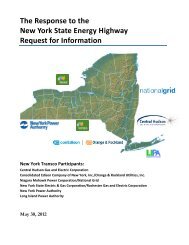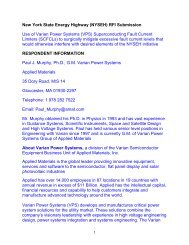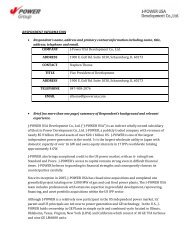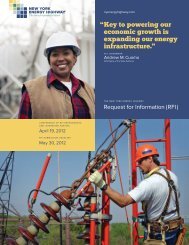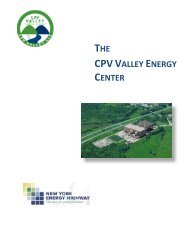Silicon Solution Joint Venture, LLC - Energy Highway
Silicon Solution Joint Venture, LLC - Energy Highway
Silicon Solution Joint Venture, LLC - Energy Highway
You also want an ePaper? Increase the reach of your titles
YUMPU automatically turns print PDFs into web optimized ePapers that Google loves.
US SOLAR – WHITE PAPER 24 May 2012<br />
1. INTRODUCTION<br />
<strong>Energy</strong> industry players, banks, and the federal government have met the majority of the solar<br />
sector’s project finance needs to date. But the landscape today is changing. 1<br />
This evolution is being driven by two factors. First, traditional players are scaling back their<br />
participation. Constrained by regulatory requirements and by the continent's financial crisis,<br />
eurozone banks are offering loans of shorter duration and with slightly wider spreads over LIBOR.<br />
In the US, a key Department of <strong>Energy</strong> loan guarantee programme lapsed in 2011 making less<br />
low-priced capital available for large-scale projects.<br />
Second, thanks to the continuing low-interest rate environment, non-traditional investors are<br />
becoming more interested, lured by the risk/return profiles of solar projects that employ well<br />
proven PV technology. Motivated by attractive yields and the examples set by Chevron and<br />
Google, US corporations are eyeing forays into tax equity. Pension funds and insurance<br />
companies are willing to give solar projects a serious look in the wake of the successful bond<br />
issuance for a solar project owned by a Warren Buffett-backed utility. The past year has seen a<br />
crescendo of conversations around financing vehicles that draw on the capital markets, such as<br />
solar-backed securitisation, master limited partnerships, and structures resembling real estate<br />
investment trusts.<br />
In parallel, new business models for deployment of solar have flourished, including variations of<br />
third-party financing structures which enable customers to enjoy the benefit of local systems at<br />
little or no upfront cost. These models have the potential to broaden substantially the universe of<br />
solar investors.<br />
This report assesses the current landscape for US solar financing, examines some of the more<br />
intriguing new structures, and explores where things are likely to go from here. It was undertaken<br />
by Bloomberg New <strong>Energy</strong> Finance and commissioned by Reznick Group – a national<br />
accounting, tax, and business advisory firm.<br />
2. US SOLAR FINANCING: HISTORY AND OUTLOOK<br />
2.1. Historical financing trends<br />
Asset financing for US<br />
PV projects has grown<br />
at a 58% annual growth<br />
rate since 2004, with a<br />
record year in 2011<br />
Asset financing for US PV projects has grown at a 58% compound annual growth rate since<br />
Bloomberg New <strong>Energy</strong> Finance began tracking this data in 2004. Activity surged to a record<br />
$21.1bn in 2011 (Figure 1), fuelled by the one-year extension of the US Department of Treasury’s<br />
1603 'cash grant' programme, an incentive that entitled project developers to receive 30% of a<br />
project’s capital cost in the form of cash, and the Department of <strong>Energy</strong>’s (DOE) 1705 loan<br />
guarantee programme, which provides partial risk-sharing with lenders by guaranteeing up to<br />
80% loans to qualified projects. The cash grant programme expired at the end of 2011, and the<br />
loan guarantee programme made its final commitments in September 2011.<br />
Historically, most of the financing, particularly for debt and tax equity, has come from a relatively<br />
small number of players, via three types of capital:<br />
• Sponsor equity: equity from large independent power producers (IPPs), smaller developers,<br />
utilities, and private equity players<br />
• Debt: construction financing and term debt, primarily from banks and the US Department of<br />
Treasury (via its lending arm, the Federal Financing Bank) (Figure 2)<br />
1 References to solar throughout this Note generally apply to photovoltaic (PV) technology, especially when<br />
describing distributed solar applications. However, many of the investment strategies and financing<br />
structures described here could also be applicable for solar thermal and even other renewables.<br />
© Bloomberg New <strong>Energy</strong> Finance 2012<br />
Strictly no copying, forwarding, shared passwords or redistribution allowed without prior written permission<br />
of Bloomberg New <strong>Energy</strong> Finance. For more information on terms of use, please contact<br />
sales.bnef@bloomberg.net. Copyright and Disclaimer notice on page 28 applies throughout. Page 2 of 28



